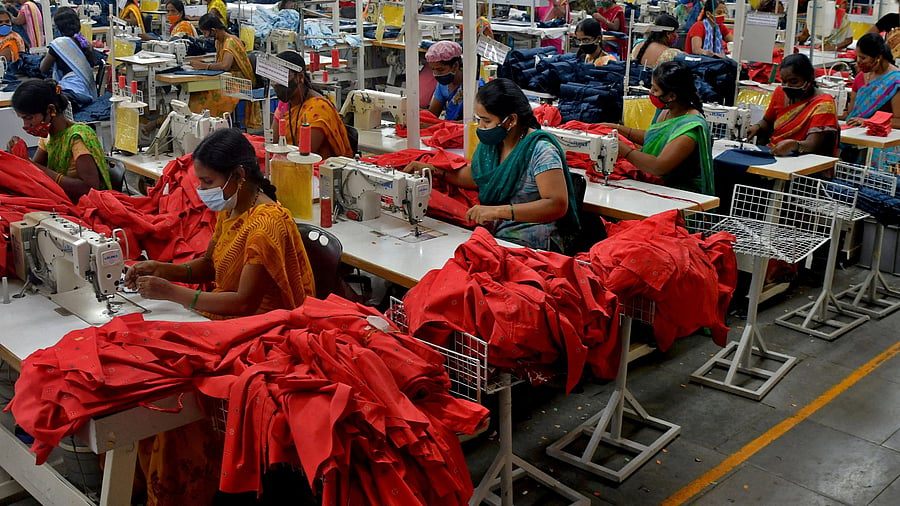
Garment workers stitch shirts at a textile factory in Hindupur town in the southern state of Andhra Pradesh.
Credit: Reuters Photo
Bengaluru: Implementation of 50% tariffs by the US administration from August 27 is expected to hit employment in the textiles sector in the short run, especially for vulnerable sections like MSME organisations and women employees.
In the medium to long run, this sector can remain resilient by focusing on diversification across geographies, especially European Union as well as a huge and growing domestic market, according to Sonal Arora, Country Manager, GI Group Holding.
Major textile and apparel export destinations for India are USA and EU and with around 47% share in total textile and apparel exports. The USA is the largest importer, accounting for about 29% of India's total textile and apparel exports.
"It must be noted that this sector is already under pressure and experiencing a worrying decline in total export value. India's garment exports in 2023-24 were USD 14.5 billion, compared to USD 15 billion in 2013-14. Whereas Vietnam and Bangladesh's garment exports grew significantly during the same period, reaching USD 33.4 billion and USD 43.8 billion, respectively," Arora said.
This is in the context of pre-April 2025, when Indian textiles faced standard 8–12% Most Favoured Nations (MFN) tariffs, in line with historical norms. Currently the tariffs for India stand at 50%, while the applicable rates for Bangladesh and Vietnam are 20%, she said.
"However, we must also consider the fact that Indian exports to the United States represents only 6% of the overall Indian textile industry, which is valued at $179 billion (Domestic $142 billion and Exports $37 billion)," she said.
The textiles and apparel industry in India is currently the 2nd largest employer in the country after agriculture, providing direct employment to 4.5 crore people. Less than 20% of the workforce is employed in large scale factories. The rest of the garment workers were attached to micro, small, and household- based enterprises (with less than 10 workers in each unit).
According to government estimates, India’s textiles and apparel industry will grow to $350 Billion by 2030 and add another 4 crore jobs in the next 5 years.
Abhishek Dua, Co-founder of Showroom B2B, said the increase in U.S. tariffs on India’s textile and apparel exports presents a significant challenge for manufacturers, but it also opens up opportunities for strategic adaptation and growth.
"To mitigate the impact of tariffs, businesses must strategically diversify into alternative export markets, especially in regions where demand for affordable fashion is increasing, such as Latin America, Africa and Southeast Asia. Strengthening their position in India’s expanding retail market will provide a buffer against export volatility," he said.